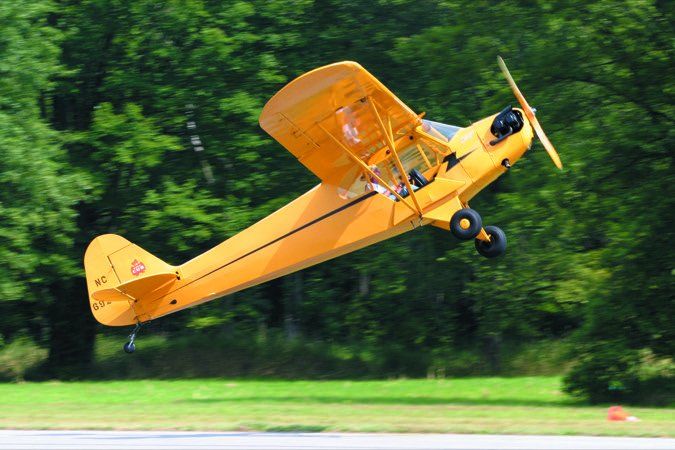To understand the significance of the J-3 Cub look all the way back to Piper’s Lock Haven, Pennsylvania, heyday, where William T. Piper was rightly seen as a visionary. But no one could have imagined how enduring that vision would be, to the extent that over 80 years later, several companies are building brand-new Cub clones that clearly trade on the mystique of the old yellow classic. Two that are front and center in the market are Legend Aircraft and CubCrafters. We think both companies nail the quality and support.
Sad to say, but perhaps the only reason that “Piper Cub” is no longer the standard generic name for every little airplane flying is that the generation that made it so has been displaced by younger folks who simply don’t understand the Cub romance and nostalgia.
The reality is that Cubs are becoming a rarity at most airports. And if they are there, they’re likely hangared and kept pristine by owners who consider their J-3 a flying pride and joy.
While the 1931 Aeronca C-3 was the first of the relatively inexpensive general aviation airplanes to be a big seller, by taking early advantage of the creation of the small horizontally opposed engine, Aeronca failed to make improvements to it.
So, in the late 1930s, when FDR’s Civilian Pilot Training program created a big demand for inexpensive trainers, it was the more advanced Piper Cub that became a mega-seller and brought general aviation to the masses, even if Piper did copy the C-3’s paint scheme. Cubs have an almost cult-like following as each year new pilots brought up on the mundane handling of nosewheel trainers discover the pure fun of stick-and-rudder flying in a ragwing airplane.
History Lesson
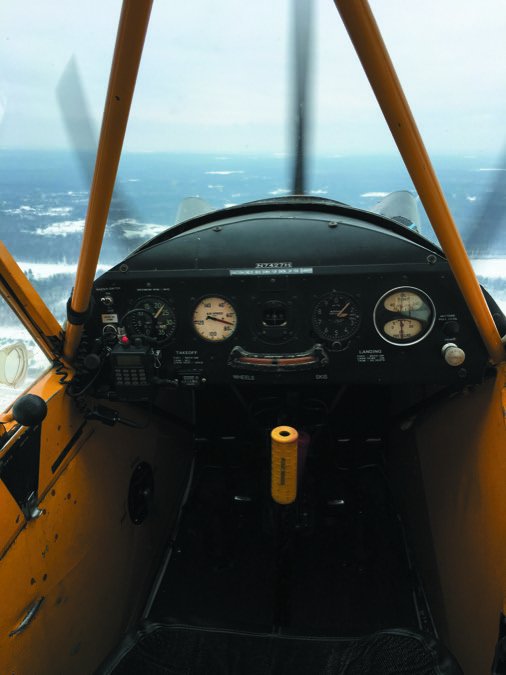
The first airplane to carry the Cub name wasn’t a Piper at all but a Taylor E-2 model, powered by a Salmson radial engine. It first flew in the early 1930s with moderate success in the market.
The J-3 didn’t appear until 1937, after William Piper had bought out Taylor, and it was an offshoot of the Taylor design. By modern standards, the first J-3 would have been classified as a sport aircraft, which it in fact is today.
The 1937 J-3 was powered by a 40-HP Continental A-40 and had a 9-gallon fuel capacity. The following year, Piper offered a 50-HP Continental as an option and a year later, in 1939, a steerable tailwheel and a 12-gallon fuel tank became standard.
At that point, the 50-HP Franklin engine appeared as an option, in addition to an engine of similar horsepower made by Lycoming, whose plant was eventually just down the road in Williamsport, Pennsylvania. More than 1300 J-3s were sold in 1939, as the CPT spurred demand and the Depression eased.
1940 saw the evolution of the J-3 into the classic form in which most models survive today, with a 65-Continental up front or, in fewer cases, the Lycoming or Franklin variants. Most had wood props, although over time, most of those have been converted to metal props.
Piper continued to pour Cubs out of its factory until the December 7, 1941, Pearl Harbor attack sent the J-3 into uniform. During the war, Piper built some 5000 L-4 versions of the J-3, slightly modified with olive drab paint jobs, electrical systems and heaters, providing the barest of creature comforts for an airplane known for its spartan appointments.
A Piper publication from the early days of World War II trumpeted the L-4’s patriotic versatility: “There is no reason why Piper L-4s couldn’t set down American Commandos behind enemy lines. And, when the boys completed their missions of destruction, these planes could get them back with speed and comparative safety.”
Piper was ready when the war ended in 1945 and transitioned quickly into building airplanes for thousands of returning vets. The following year, an astounding 6320 Cubs were built, with production reaching 50 a day at one point, or one every 10 minutes.
The market collapsed in 1947 and production plummeted to 720 Cubs-respectable by modern standards but a shock after the previous year. By the end of its production run, 14,125 J-3s had been built. Less than half that many remain flying in the U.S.
Market Prices
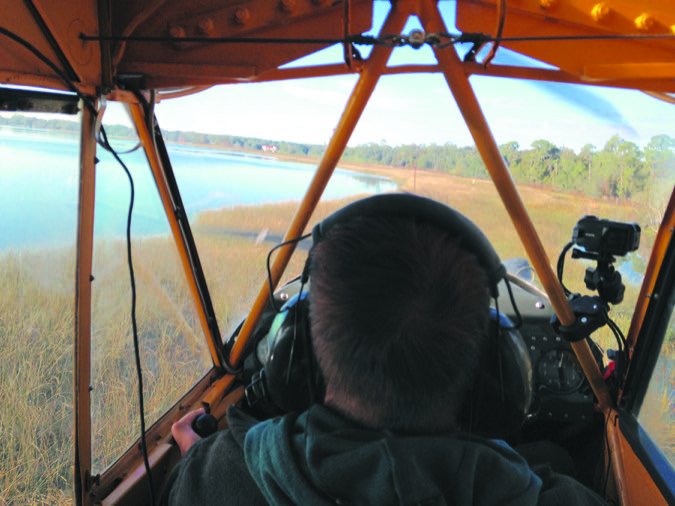
Looking at what J-3s sold for when new, some of those old military jocks probably slap their foreheads in regret for not picking up a couple of dozen. In its heyday, the Cub sold new for $1595, or $20,902 in early 2019 dollars. It cost about what the typical car did.
By the 1970s, Cubs were quite a bargain, averaging about $2500 or so. Prices shot up through the 1980s and 1990s, until they began to settle down in the mid-2000s as the prices of other general aviation airplanes stagnated or began to slip. Incidentally, that’s about when kit-built Cubs began to appear.
In 2019, a newly restored (a high-quality restoration, that is)showpiece with a zero-time engine and original equipment and instruments can bring $40,000 or more. Even a barely flyable hangar queen will bring a nice piece of change as Cubs have a certain cachet not shared by most of its contemporaries, probably due to the ability to fly with its clamshell doors open-for many, an ideal compromise between open cockpit and closed cabin. It’s tough to find anyone who doesn’t see the appeal.
A cold-eyed examination of the value of a Cub, based on comparative performance, indicates it’s not an especially good deal. Consider that a Taylorcraft of a much newer vintage-say mid-1970s-sells for $10,000 less and an Aeronca Champion (circa late 1940s), which has slightly better performance, for every bit of $4000 to $5000 less. The reality is that no one buys a Cub for what it can do but what it is: a classic with an appeal the others lack.
“Only the Cub can attract the really top dollar,” one rebuilder once told us. Simply put, the Cub aura transcends its objective characteristics. Does that mean that it’s a good investment airplane? In terms of appreciation in real dollars, no.
However, historically it has held its value much better than its contemporaries and, so long as the buyer doesn’t have to undertake a restoration, a Cub should be the best of the 1940s tube and fabric airplanes in terms of bringing the most when it’s time to sell.
Engines and Performance
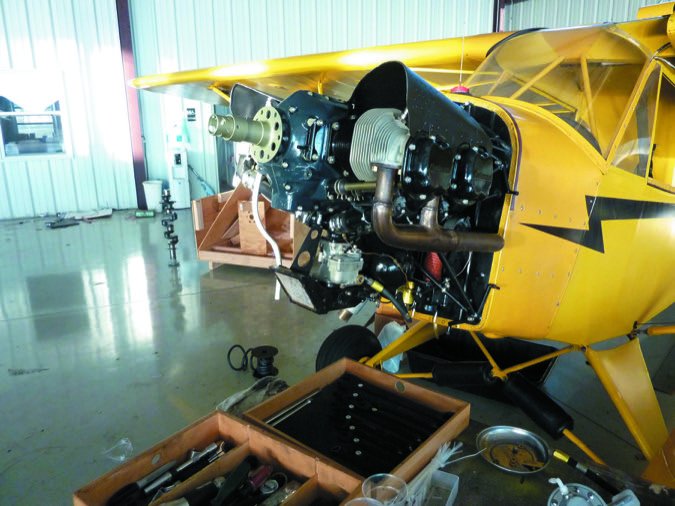
Although the 65-HP Continental was the standard Cub engine, many have been refurbished with progressively more powerful engines. There’s little difference between the 65- and 75-HP models, but the progressively bigger engines provide extra climb rate, especially for high-attitude or float operations, where the Cub is a marginal performer.
The larger engines may raise a Cub’s value by $500 to $1000. But the 65-HP engine is perfectly adequate for most Cub flying and is preferred for ultra-original restorations in which any variation from original configuration is considered a drawback. The Lycoming and Franklin 65s are somewhat rare these days and carry a price penalty of a few thousand dollars. The Lycoming actually puts out something like 50 to 55 HP (with less fuel consumption), while the Franklin suffers from a parts scarcity, we’re told.
In a Cub, speed is relative, of course, and a J3 isn’t relatively slow. It’s very slow. Typical cruise speed is about 70 MPH with the 65-HP and 75-HP engines, while those sporting the 85-horse mills can streak along at 80 MPH. Then again, Cubs aren’t cross-country airplanes. With only 12 gallons aboard, practical unrefueled range is about 150 miles, after which you’ll want to get out for a stretch anyway. An Aviation Consumer editor once flew a Cub coast-to-coast in nine days, with 42 stops for gas.
The Cub comes into its own not in long-distance cruising but in operations off airports with grass runways. At light weights, on cool days, the Cub is an excellent short-field ship, particularly with the 85- and 90-HP engines. The fat wing delivers stall speeds somewhere around 40 MPH. Heavy or hot, it will still lift off in a short distance, but climbs over nearby obstacles can be unpleasantly sporty, given the airplane’s high drag and lack of surplus thrust.
The Cub has a reputation as a docile, easy-to-handle airplane that just about anyone can fly. It’s considered a big teddy bear, ever forgiving of ham-fisted pilots. It isn’t.
On the runway, the Cub can be a ditch lover and like any other taildragger, it will groundloop if given the chance, although it’s considered one of the better-handling taildraggers. For pilots used to toe brakes, the Cub’s heel brakes are weak and awkward.
The wing has no dihedral, meaning little roll stability. It has very sluggish ailerons that generate a lot of adverse yaw, thus requiring a good deal of rudder. Even a mild turn will require a healthy stab at the rudder, something most pilots trained on nosegear airplanes have to learn. The stall, if the controls are coordinated, is relatively docile; however, the horizontal stabilizer has no camber, which helps generate a very rapid roll-off and pitch down into an incipient spin at the stall if the ball is not absolutely centered.
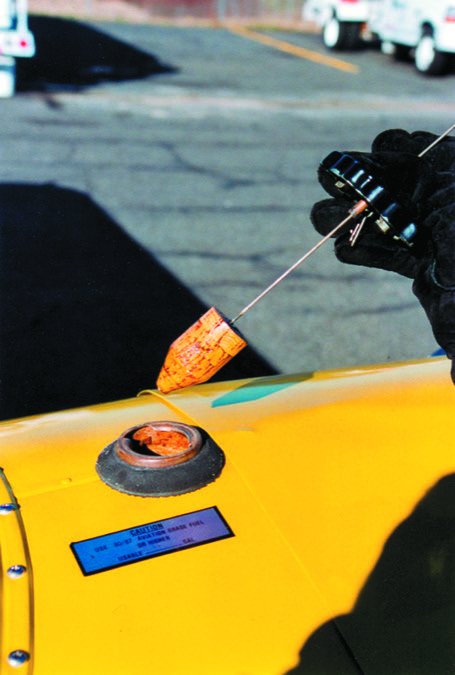
That will eat up 300 or 400 feet in a hurry. This characteristic has killed a lot of Cub pilots and passengers who were maneuvering down low. So much so that it is called the “Moose Stall” in Alaska from the number of moose spotters who have gone to their reward after an uncoordinated stall in a turn a few hundred feet above the trees. Our review of fatal accidents over the last 10 years showed that about half involved low-altitude maneuvering into either a stall or impact with terrain.
With adequate altitude, the Cub is a first-rate spin trainer; it will stall and spin easily compared to later training aircraft such as the Cherokee 140. Conventional anti-spin control inputs will recover it easily.
The soft bungee cord suspension absorbs bounces we’ll and the big rudder gives excellent directional control. However, the Cub can be humbling to land, requiring deft footwork to maintain directional control, especially in all but the lightest crosswinds. The Cub’s light wing loading makes it a kite in gusty conditions. With the low landing speed, a 15-knot crosswind can present a major challenge. New Cub owners are we’ll advised to seek competent instruction before soloing.
No-Frills Dwelling
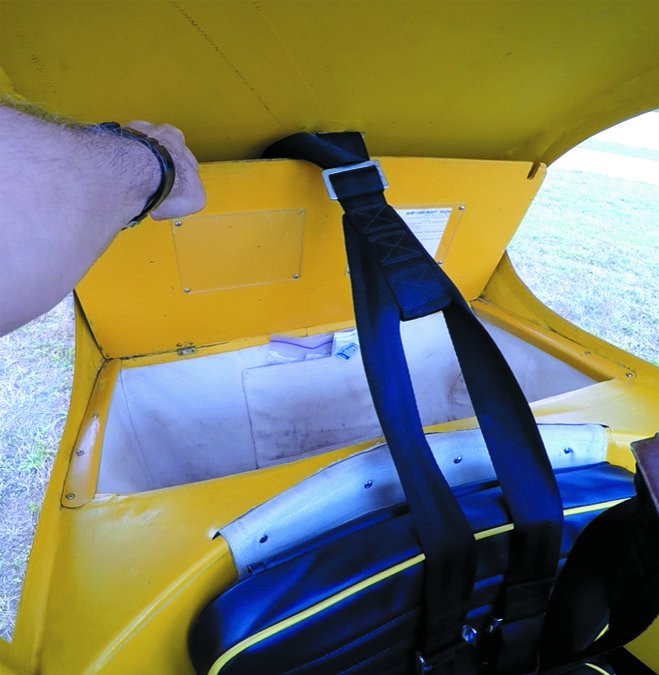
In these used airplane reports we often pay close attention to cabin comfort. For this report on the Cub it’s easy: You won’t be overly comfy in one. It’s loud, the seats are utilitarian at best and getting in and out is, well, an exercise. And yes, you wear the airplane more than you sit in it. But that’s part of the Cub experience, we suppose.
Getting into the back seat-from whence you solo-is not so bad but ingressing the front requires some contortions. Once in the back, leg-room is acceptable, with the legs extended forward to the rudder pedals and brakes. The front seater is balled up in a painfully cramped seating position that’s not comfortable for any length of time.
Baggage room is essentially zip; there’s room for perhaps a loaf of bread in the canvas “luggage compartment” behind the rear seat. These days, most J-3 pilots mount a portable GPS somewhere in the cockpit, along with a handheld VHF radio for self-announcing on CTAFs. Beyond that, the instrument panel has the bare necessities. There’s a tach, an airspeed indicator, oil pressure gauge and altimeter. The fuel gauge consists of a cork float supporting a vertical a wire that is visible through the
windshield.
For such a small, simple airplane, a Cub has the potential to eat up lots of cash. Derek DeRuiter of Northwood’s Aviation in Cadillac, Michigan, has, with his father, rebuilt scores of Cubs over the years and offered some comments regarding things to check carefully on any airplane considered for purchase as an unintended restoration can eat your checkbook.
Fabric condition: Cubs were originally covered with Grade A cotton; it should be avoided unless you are a fanatic for authenticity and willing to pay the price of regular recovering. It lasts maybe eight years if the airplane is hangared. Most Cubs are now covered with Dacron fabrics such as Ceconite. Properly applied and protected from ultraviolet radiation, these fabrics will last as long as you’re likely to own the airplane.
Engine condition: TBO of the little Continentals is listed as 1800 hours, but the number is almost irrelevant, since most J-3s aren’t flown much and succumb to time and lack of use rather than hours. An engine may have only 600 hours since overhaul, but if the overhaul was in 1979, the engine may or may not be long for this world. Check compression and oil pressure.
Rust: Check the lower rear longerons and the tail post. They do rust; don’t buy an airplane without carefully checking this area.
Wing struts and strut forks: Made of the same rust-prone steel as the fuselage tubes, these critical parts have a long history of corrosion problems. A series of ADs applies to this critical area requiring inspection every 100 hours until replacement; make sure that all have been complied with.
Fuel tank and drain: Original Cub fuel tanks were made of lead-coated steel, and they rust out regularly where water collects in the bottom. (Be especially wary of the 1940-45 J-3 and L-4 models, when the factory was skimping on the lead coating.) An AD also requires a new fuel drain. Many, if not most, of these tanks have been replaced by aluminum tanks but check the logs and inspect to be sure.
Wooden wing spars in pre-1946 airplanes: Check for dry rot and cracks.
Landing gear attach fittings: A weak point; check between them for condition, especially if the airplane has been on floats. The landing gear bungees are good for about three years.
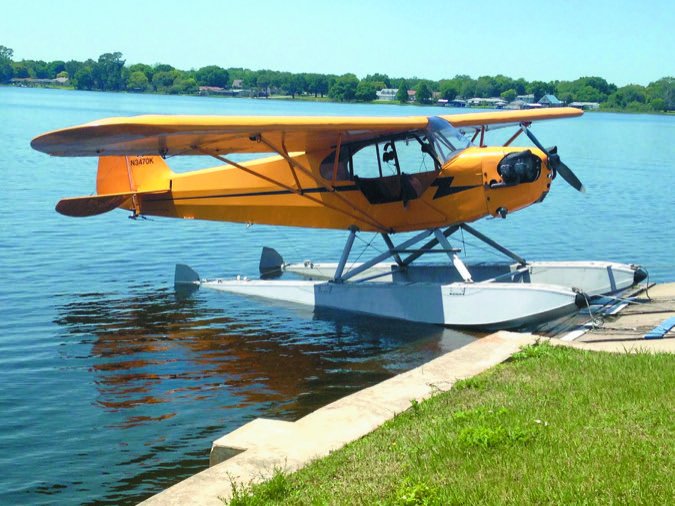
Misc: The elevator trim system components wear out; inspect carefully. The rudder and elevator hinges wear out; also check carefully and look closely for corrosion.
Accident Damage: Cubs are subject to all sorts of minor landing and takeoff accidents and their huge wings and light weight make them very prone to wind damage while tied down.
We would suspect that the vast majority of Cubs have been damaged at some time or another and a fair number of those now flying were built from the wreckage of two or three or more and one data plate. Or from a data plate and parts from Univair. That’s OK, if the work was done correctly. Only a Cub expert will know, however, so we recommend contacting one of the Cub groups for a list of shops that know the airplane.
We wouldn’t be put off by an airplane that has been groundlooped-most have-but make sure damage has been repaired correctly. Again, retain a Cub expert to have a look. It doesn’t take long to do a thorough, professional prebuy on a Cub.
Support
Although Piper has long since stopped making the Cub, finding parts and support to keep one flying is a snap, thanks to a couple of sport aircraft parts houses. In many cases, the replacement parts are vastly superior to the originals; aluminum fuel tanks, for example, are lighter and far less prone to corrosion than the originals-not to mention cheaper.
The two big suppliers of Cub parts are Univair and Wag-Aero, both of which stock a complete selection of PMA’d Cub service parts. Wag-Aero Group is in Lyons, Wisconsin, at 800-558-6868 and at www.wagaero.com. Contact Univair Aircraft Corp. at 888-433-5433 and at www.univair.com.
An excellent owner group is the Piper Cub Club, in Hartford, Wisconsin. Its contact is 262-966-7627 and www.cub-club.com.
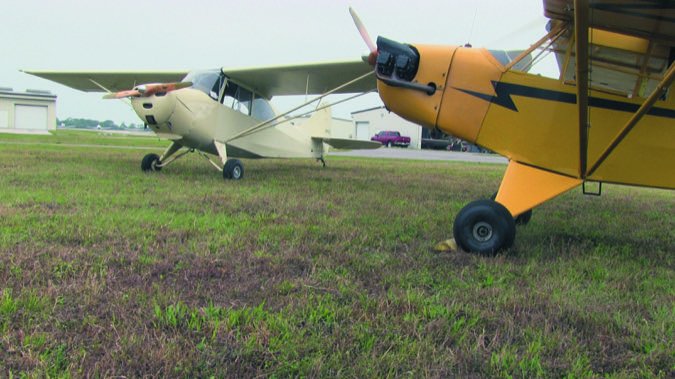
In addition, there are a couple of excellent websites devoted to the Cub. One is www.j3-cub.com, which features photos, memorabilia and a wealth of Cub knowledge that means a would-be owner is never more than a click away from having questions answered.
Although it’s aimed more at Super Cubs, www.supercub.org also includes some information on J-3s. It’s rich in photos and Cub lore.
Piper J-3 Accidents: Stalls, Rloc
Having flown J-3s for more years than we like to consider, we were interested to note that only 16 of the 100 most recent prangs involved runway loss of control (RLOC). Because most groundloop events usually involve minor or no damage, they are not required to be reported under the NTSB regs. With heel brakes of varying quality and challenging ground handling, we think the real rate of RLOC events in the J-3 is significantly higher than 16%-and we strongly recommend a careful checkout if you decide to buy what we consider one of the most fun to fly airplanes ever built.
Being able to fly a J-3 with the fold-down door and fold-up window open has been a huge factor in the aircraft’s success. It’s also, we think, a huge factor in the high percentage of stupid pilot trick accidents-mostly hitting stuff while flying low or pulling up into a stall after a low pass-we observed with Cubs.
There were 20 stall accidents, split about half and half between losing it shortly after takeoff-often over gross and/or in high density altitude ops-and while maneuvering in the weeds.
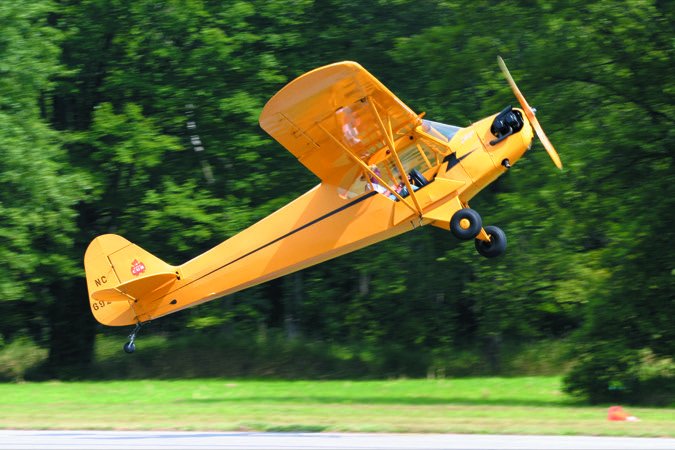
1)]
Normal cruise in a Cub is just about slow flight in anything else, and wrapping the high-drag airframe into a steep turn scrubs speed in a hurry, taking the airplane near stalling angle of attack. While a Cub has a docile stall, doing so when the ball isn’t centered is an invitation to a rapid roll-off and steep pitch down that may take more altitude than is available for even the best pilot to recover.
With its low wing loading a J-3 is big-time susceptible to wind gusts and shear. A number of the inflight loss of control accidents as we’ll as hitting obstructions on takeoff or landing and blown go-arounds involved high winds and turbulence. A Cub has a slow roll rate, requiring putting the ailerons and rudder to the stops to keep the airplane pointed where the pilot desires in serious turbulence. Turbulence can also cancel out what little rate of climb the airplane has in high and hot conditions.
We were, nevertheless, impressed by the pilot who got sideways on landing in gusty winds, went around and flew the airplane into an open hangar, suspending it on a wall, five feet above the floor.
When we do accident sweeps for the Used Aircraft Guide we expect to see, at most, one ground collision. There were four involving J-3s, a very high rate, even for tailwheel birds. Ground visibility is lousy and a pilot has to aggressively look out for other airplanes during ground ops.
Two Cubs were simply blown over when taxiing. Correctly positioning the ailerons and elevator during taxi is not just an academic exercise in a J-3.
The rate of engine stoppages was below what we expect to see-the little Continentals seem to be holding up we’ll over time.
We’re used to seeing ground impact accidents involving folks shooting coyotes from a Cub-losing control while chasing critters just seems to be a thing to do. However, one pilot/marksman team flew into the ground because the shooter dropped a shotgun shell and jammed his control stick. The pilot couldn’t get enough aft deflection to avoid terra firma.
Owner Feedback
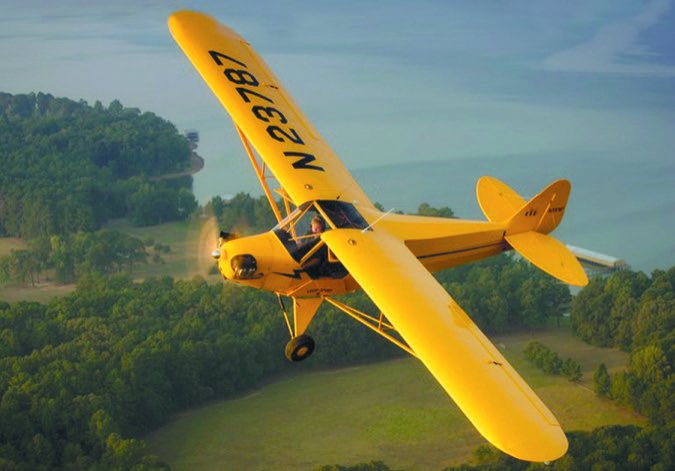
I have owned the same Piper Cub since 1977. Mine is a 1942 L-4 (the military variant of the J-3), which has excellent visibility in turns with the big greenhouse windows across the top and along the sides. I bought it with my father for me to learn to fly some 42 years ago and I have flown it coast-to-coast five times and shipped it to Europe twice while I was stationed there with the Air Force (once to Germany and once to Belgium) because, I really love flying my Cub! I fly my Cub about 15 hours a month as part of my business.
The Cub is an absolute joy to fly. It is slow-really slow-and noisy, but nothing matches flying along in the back seat (you solo from the back) with the breeze blowing in through the door and drifting along like a stately pelican over the trees and countryside. Still, it is a bit too slow for many. Champs and Luscombes will certainly outrun it. But this is not a plane for speed. This is a plane for pure aviation enjoyment. I had a 65-HP engine in it for several years and switched to the Continental 90-HP engine back in 2004. The bigger engine has much better power to get in the air, especially if living out west with high density altitudes or high temperatures. Those aero equations for power versus speed are right and I found that most 65-HP Cubs cruise around 60 to 65 MPH and burn around 4.5 to 5 GPH. My 90-HP Cub cruises around 74 MPH (60 knots) and burns around 5.6 GPH.
Those numbers fit what the Continental engine manuals predict almost exactly. That gives you about two hours of flying (around 120 to 140 miles) with the 65-HP engine and around 1.8 hours in the 90-HP airplane (around the same distance). After that, you really are cutting into any 15-minute reserve fuel remaining.
I have heard guys claim that their Cubs cruise around 90 MPH and I just haven’t ever seen one that really flies that fast except in a slight dive. Those big 8×4 tires and wing struts and bungee cords are a lot to drag through the air.
Insurance is about $600 to $800 per year if you have a good bit of tailwheel time. You need to count on hangaring one of these, or any very lightweight fabric plane for that matter.

0)]
Parts are plentiful between Univair, Wag-Aero and Aircraft Spruce, to name a few. You can find just about every part you will ever need. The biggest concern (and complaint) to watch when flying a Cub is weight. Most Cubs weigh around 780 to 820 pounds empty. Given that it is a 1220-pound max gross weight plane, that only leaves 440 pounds (or less) for fuel and pilots (forget about bringing stuff). Subtract 72 pounds for 12 gallons of gas and you have 368 pounds remaining. Now if you put an average 190-pound pilot in there, you only have 178 pounds for your passenger-and that is if your Cub weighs 780 pounds empty. Mine (and I expect most others) are really over 800 pounds empty, so with full fuel and me, any passenger I fly needs to be very light.
I have a wind-driven generator between the landing gear legs to power a transceiver, a transponder, altitude encoder and ADS-B In and Out, so I can fly almost anywhere and enjoy experiencing aviation at a pelican’s speed and altitude.
With over 6100 hours in everything from fighter jets to gliders, I can’t think of an airplane that is as relaxing and enjoyable to fly as the J-3 Cub.
Jon Engle
Charleston, South Carolina

